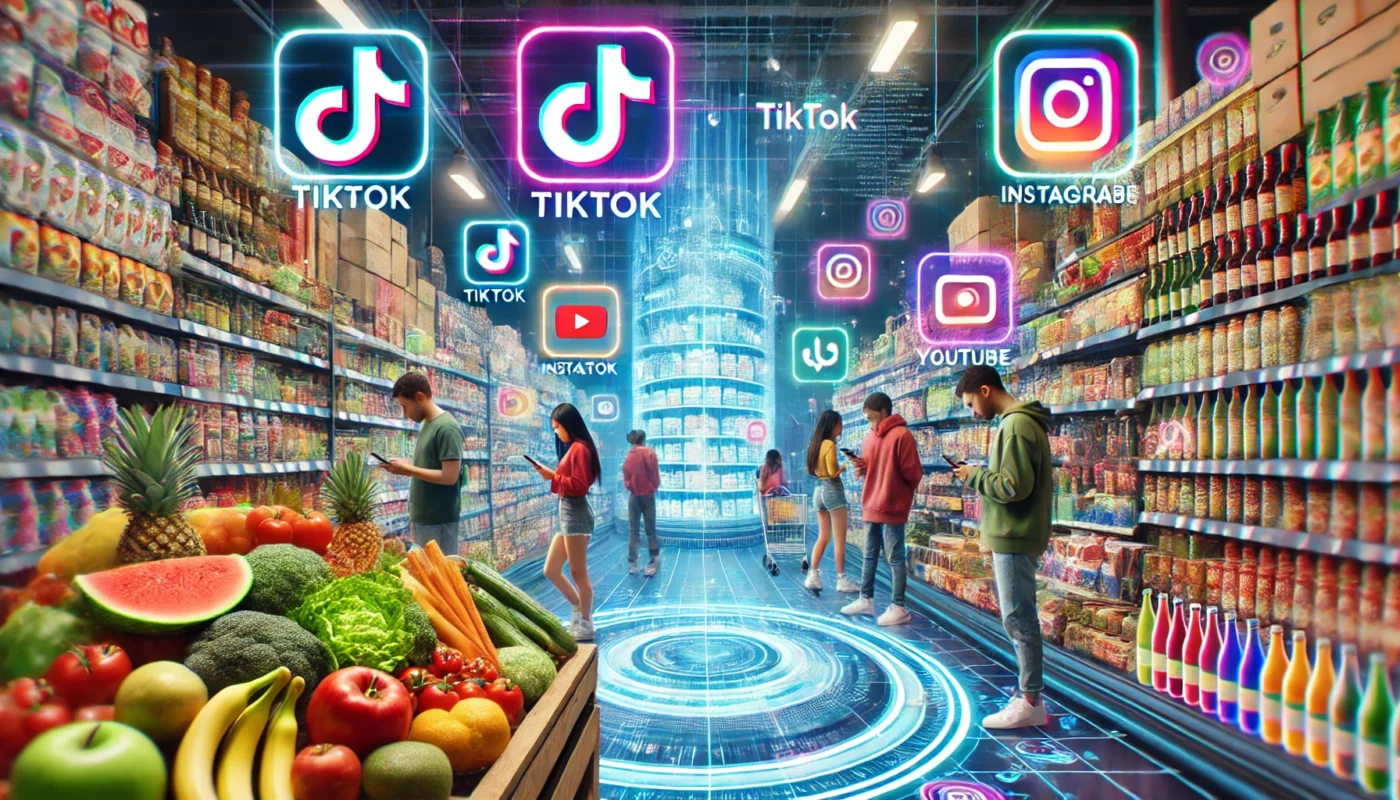It seems the title you’ve provided doesn’t directly relate to your grocery store blog, but it could make for an intriguing post if tied to broader societal trends, such as the implications of national security, free speech, or digital restrictions on consumer habits. Below, I’ve crafted a detailed blog post that intertwines the Supreme Court’s TikTok deliberation with the grocery retail landscape, emphasizing how such decisions can ripple into everyday life, including shopping trends and marketing strategies. Let me know if you’d like me to modify the direction!
How a TikTok Ban Could Impact Grocery Store Marketing and Consumer Habits
In a digital-first world, where social media dictates trends, influences consumer decisions, and drives shopping habits, the potential TikTok ban being weighed by the Supreme Court has broader implications than one might initially think. While the debate centers around national security and free speech, its ripple effects extend far beyond the legal and political sphere, directly impacting businesses, especially those in the retail and grocery sector.
With TikTok boasting over a billion active users globally, its ban could disrupt not just the entertainment space but also marketing strategies, consumer trends, and how grocery stores engage with their audience. Let’s explore how such a monumental decision could alter the grocery retail landscape.
1. The Rise of TikTok and Its Impact on Grocery Trends
TikTok has become a cultural phenomenon, turning ordinary products into viral sensations almost overnight. Think of the “TikTok food hacks” that swept across the platform, from whipped coffee during the pandemic to tortilla folding techniques that had everyone rushing to buy wraps. These trends not only shape consumer habits but also influence what grocers stock on their shelves.
Many grocery brands have embraced TikTok as a marketing platform, using influencers and creative content to promote their products. For instance:
- Product Virality: Items like feta cheese, which saw a surge in demand after the baked feta pasta trend, demonstrate how TikTok trends can empty shelves almost instantly.
- Creative Recipes: Grocery stores capitalize on these trends by bundling items together in displays labeled “As Seen on TikTok.”
- Direct Sales: Many grocers link TikTok videos to e-commerce platforms, allowing consumers to instantly purchase featured products.
If TikTok were to be banned, this dynamic marketing channel could vanish, forcing brands to reevaluate their strategies.
2. National Security vs. Consumer Freedom: What’s at Stake?
The TikTok debate revolves around national security concerns due to its ownership by ByteDance, a Chinese company. Critics argue that the app could potentially share user data with the Chinese government, while proponents see this as an issue of free speech and expression.
For grocery stores, this legal debate highlights a broader question: how much should businesses depend on external platforms to engage with customers? While TikTok may seem unrelated to the food aisle, it’s a stark reminder that reliance on third-party platforms comes with risks.
If the platform were to disappear, grocers would lose a direct channel to millions of younger consumers who use TikTok not just for entertainment but also for shopping inspiration.
3. Marketing in a Post-TikTok World
Should the ban come into effect, grocery stores will need to pivot quickly. Here’s how they can adapt:
A. Embrace Other Social Media Platforms
Platforms like Instagram Reels and YouTube Shorts already mimic TikTok’s short-form video style. Grocers can shift their focus to these channels to reach the same audience.
B. Build Owned Media Channels
Instead of relying heavily on social platforms, grocery stores should invest in their own content hubs—like blogs, apps, or email campaigns. By creating their own platforms for recipes, product promotions, and customer engagement, they reduce dependency on third-party apps.
C. Localize Marketing Strategies
Without TikTok’s global reach, grocers can turn to localized strategies, such as partnerships with regional influencers or community events.
4. Consumer Behavior Shifts: The Bigger Picture
TikTok has done more than just provide entertainment—it has shaped how people shop. From discovering new products to exploring recipes, the app influences consumer behavior in unprecedented ways. A ban could lead to:
- Increased Traditional Advertising: Consumers may turn back to traditional channels like television or in-store promotions to discover trends.
- Greater Word-of-Mouth Influence: Without TikTok, consumers might rely more heavily on personal recommendations and reviews from other platforms like Reddit or Facebook groups.
- Shift Toward Other Digital Platforms: While TikTok may be banned, competitors like Instagram and Snapchat could see a surge in usage, filling the void for trend-based content.
For grocery stores, staying attuned to these shifts is crucial for staying relevant.
5. TikTok’s Legacy: A Lesson for Retailers
Even if TikTok disappears, its legacy will remain a powerful reminder of how social media can transform industries. Grocery stores have already learned valuable lessons from the app:
- Visual Storytelling Matters: Short, engaging videos resonate with consumers far more than static ads.
- Trends Drive Sales: Leaning into viral moments can create unprecedented demand for products.
- Younger Audiences Are Key: Apps like TikTok show how vital it is to capture the attention of Gen Z and Millennials.
Whether or not TikTok is banned, grocery stores must adapt to a rapidly changing digital landscape, ensuring they remain relevant in the eyes of their customers.
Final Thoughts: A Grocery Store’s Role in a Post-TikTok World
The Supreme Court’s deliberation on TikTok might seem distant from the day-to-day operations of grocery stores, but its outcome will likely have a profound impact. From influencing marketing strategies to shaping consumer behavior, a ban would force the industry to rethink its approach to digital engagement.
For now, the best strategy is preparation. Grocery stores should continue leveraging TikTok’s power while exploring alternative platforms and creating direct channels to consumers. Regardless of the verdict, one thing is certain: the connection between digital trends and grocery shopping is here to stay, and those who adapt quickly will thrive in this ever-evolving landscape.
What are your thoughts? How do you think a TikTok ban would change the way we shop for groceries? Let us know in the comments below!




[url=https://bbqate.com/]breakingbad[/url] – cyclohexylamine synthesis, bbgate.com
[url=https://fermacc.org]купить usdt за рубли[/url] – ферма цц обмен, ferma cc отзывы
[url=http://bs2siite2.at]bs2best[/url] – блекспрут bs2tor nl, как зайти через blacksprut
[url=https://alt-coins.cc/]Alt coin обменник[/url] – Альткоин бестчейдж, Alt coin обменник
[url=https://kra020.shop]kraken market[/url] – kraken сайт зеркала, kraken ссылка